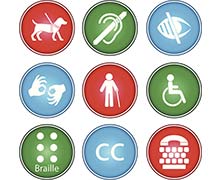Engaging Consumers
The ability to engage and involve people with disabilities in the scientific process is vital to the long-term goals of both researchers and consumers. This expo area highlights potential avenues for delivery of information and links to groups that help to involve consumers in the formulating of knowledge.
The Center for Rehabilitation Outcomes
Midwest Regional SCI Model System staff have launched a new video series that provides insights and inspiration to living life after SCI. Check back periodically for updated videos.
- Video: Beyond the Research with Kenneth Hill (from MRSCICS Matters newsletter, Summer 2019)
- MRSCICS Matters newsletter archive
- CROR Outcomes newsletter archive: https://www.sralab.org/node/84332 Description: Midwest Regional SCI Model System staff have launched a new video series that provides insights and inspiration to living life after SCI. Check back periodically for updated videos.
Cochrane Consumer Network (CCNet)
The Cochrane Consumer Network helps healthcare consumers participate in their own healthcare decisions by helping them engage directly with scientific evidence.
Consumers United for Evidence-based Healthcare
Consumers United for Evidence-based Healthcare (CUE) is a national coalition of health and consumer advocacy organizations committed to empowering consumers to make the best use of evidence-based healthcare.
Engaging Ways to Engage Stakeholders
During the 2018 KT Conference, Engaging Ways to Engage Stakeholders, presenters emphasized the importance of incorporating stakeholder participation into project planning and implementation. Stakeholder engagement in research and development processes generally aims to increase topic and product relevance; improve procedures, subject recruitment in particular; and inform how findings are interpreted, embedded in dissemination and technology products and applied in practice and policy.
University of Montana Rural Institute Research and Training Center on Disability in Rural Communities
Description: Involving consumers in disability research helps ensure the products of research are relevant and useful. Research and Training Centers across the country work hard to incorporate consumers into the research process and are mandated to do so by their primary funding agency, the National Institute on Disability, Independent Living and Rehabilitation Research, (NIDILRR).
"Voices of Experience" video series
A 10-part video series for people with new spinal cord injuries that features people who have been living with spinal cord injuries for years. They know…They’ve lived it.

